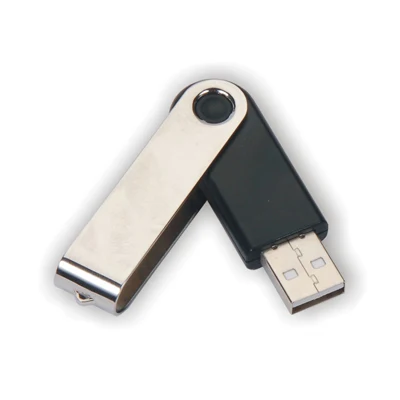General Udisk Usb Device Driver
Udisk Udisk 2.0 USB Device: Drivers List 5 drivers are found for ‘Udisk Udisk 2.0 USB Device’. To download the needed driver, select it from the list below and click at ‘Download’ button. Please, ensure that the driver version totally corresponds to your OS requirements in order to provide for its operational accuracy. Version: 6.1.7600.16385 Date: 2006-06-21 File Size: 61.37K Supported OS: Windows 7 32bit Version: 6.1.7600.16385 Date: 2006-06-21 File Size: 77.34K Supported OS: Windows 7 64bit Version: 6.1.7600.16385 Date: 2006-06-21 File Size: 36.41K Supported OS: Windows 7 32bit Version: 6.1.7600.16385 Date: 2006-06-21 File Size: 43.55K Supported OS: Windows 7 64bit. The Sciologness.com™ agent utility uses data collection technology to conveniently update multiple PC drivers. Drivers are the property and the responsibility of their respective manufacturers, and may also be available for free directly from manufacturers' websites. Sciologness.com is not responsible in any way for the performance of or issues caused by any third-party drivers.Drivers may also be available for free directly from manufacturers' websites.
Microsoft and Windows are either registered trademarks or trademarks of Microsoft Corporation in the United States and/or other countries. Any other third-party products, brands or trademarks listed above are the sole property of their respective owner. No affiliation or endorsement is intended or implied.
 Udisk Flash Disk USB Device - windows driver manual installation guide zip udisk Flash Disk USB Device - windows driver driver-category list Even if udisk Flash Disk USB Device may be necessary for the computer's healthy functioning, it is by no means the only driver your system is dependent on. Oct 10, 2018 - GENERAL UDISK USB DEVICE DRIVERS FOR WINDOWS 10 - Nothing seems to help. This is used to detect comment spam. If you are just.
Udisk Flash Disk USB Device - windows driver manual installation guide zip udisk Flash Disk USB Device - windows driver driver-category list Even if udisk Flash Disk USB Device may be necessary for the computer's healthy functioning, it is by no means the only driver your system is dependent on. Oct 10, 2018 - GENERAL UDISK USB DEVICE DRIVERS FOR WINDOWS 10 - Nothing seems to help. This is used to detect comment spam. If you are just.
I have 2 Kingston 16GB flash memory sticks. One of them (along with 9 other USB flash memory sticks I have) get mounted as drive G: by Windows. The other Kinsgton drive gets mounted as I. In the past, both Kingston devices acted just like all my other USB flash memory drives, but I've obviously don't something to the one.
I may have had it formatted as an NTFS drive, but I've reformatted it to FAT32. I've re-reformatted it using the 'Restore device defaults'. Nothing seems to help. As near as I can see its characteristics are identical to the other Kingston drive.
This is obviously not an earth-shaking problem, but I'd like to know what I've done, why Windows is reacting to whatever I've done, and whether it presages problems with this device. And by the way, how does Windows decide what drive letter to assign to a USB drive? I know it picks a different letter for FAT32 and NTFS drives so there must be some sort of logic process going on. Computer Type: PC/Desktop System Manufacturer/Model Number: 2-Custom Computers, ASUS Desktop, Dell Inspiron 580 Desktop + Dell Inspiron 15R Notebooks [2] + more OS: Win10 Home and Pro, Win10 Insider Preview, WinXP Home Premium, Linux Mint CPU: AMD and Intel Motherboard: ASUS, GigaByte, others Memory: 16GB in ASUS, max.
4GB or 8GB in all others Graphics Card: AMD ATI Radeon or Onboard, ASUS with nVidia GT-710 Sound Card: Onboard Monitor(s) Displays: HP 21.5' Touchscreen, ASUS 27' 4-input Screen Resolution: Usually 1440x900 Mouse: Microsoft Optical Mouse, Wireless and Bluetooth mice with Notebooks Hard Drives: Various internal HDDs and USB HDDs plus 2 x 2TB NAS drives connected to Router. Internet Speed: 5Mbps Browser: Internet Explorer 11, Firefox and SeaMonkey, Edge when absolutely necessary Antivirus: Windows Defender Other Info: Also running Linux Mint on a Desktop and a Notebook. HP Laserjet and HP Officejet printers connected to Router. I just went into Disk Management and tried messing around with drive letter assignment.


I tried deleting the letter assignment (I:) for this device, but Windows took that very literally. It no longer assigned any drive letter to the device. I then changed the assigned letter to G: - the same as is dynamically assigned by Windows to all my other USB flash memory drives, but I assume that Windows will now try to use G: for this device even if it has reason to switch to H: for other USB drives. Apparently there is something (in the registry?) that is mapping some identifying hardware characteristic of this device to the assigned drive letter.